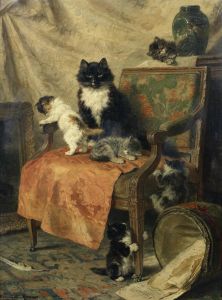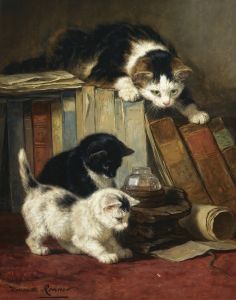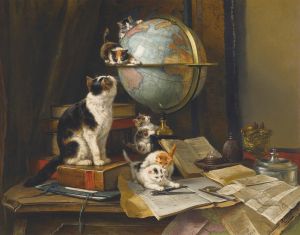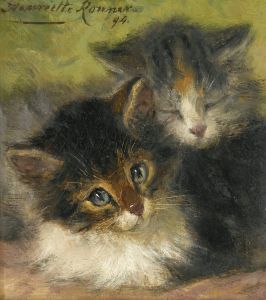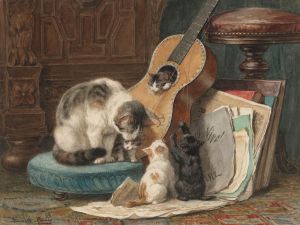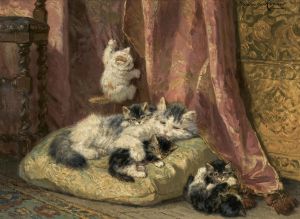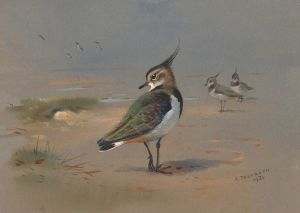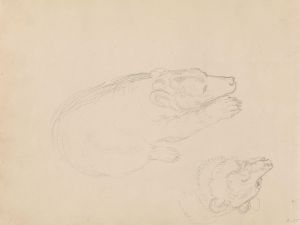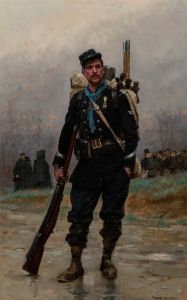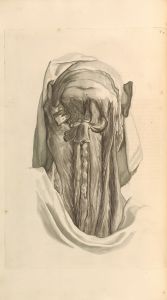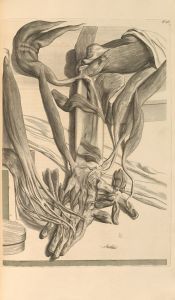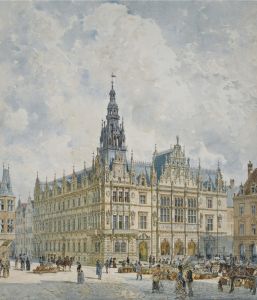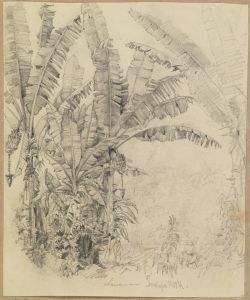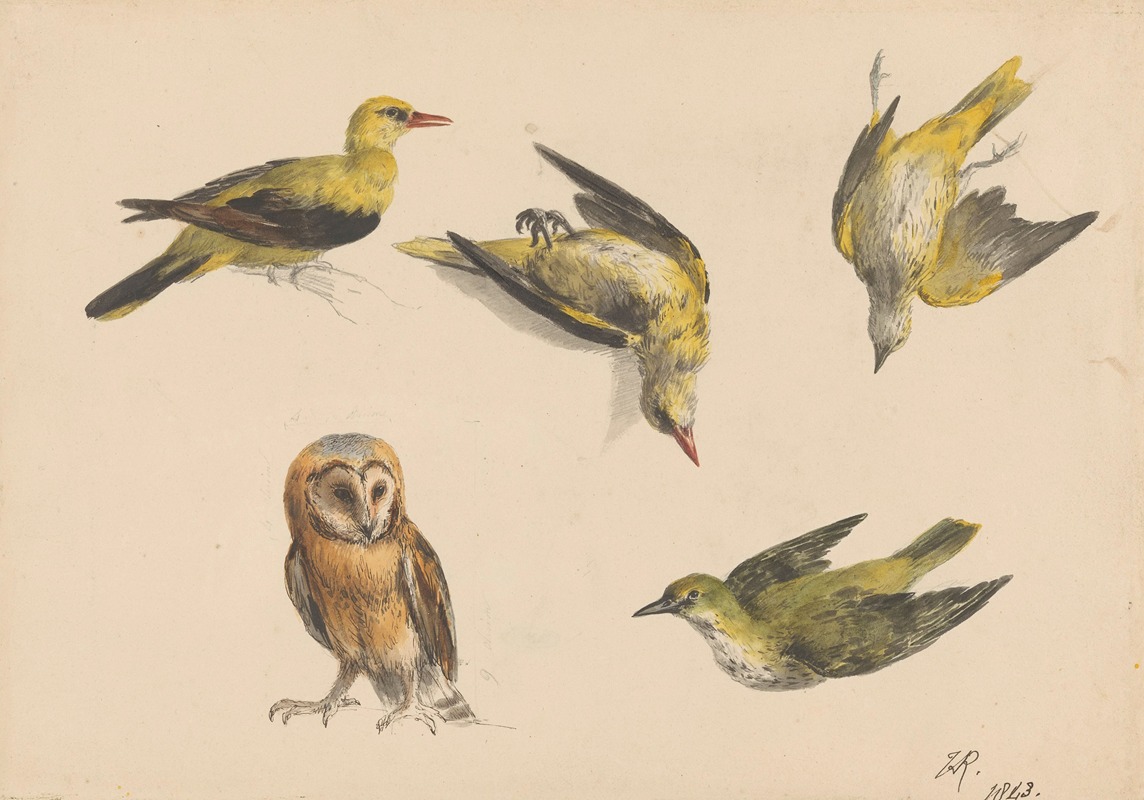
Studies van een uil en twee wielewalen
A hand-painted replica of Henriëtte Ronner-Knip’s masterpiece Studies van een uil en twee wielewalen, meticulously crafted by professional artists to capture the true essence of the original. Each piece is created with museum-quality canvas and rare mineral pigments, carefully painted by experienced artists with delicate brushstrokes and rich, layered colors to perfectly recreate the texture of the original artwork. Unlike machine-printed reproductions, this hand-painted version brings the painting to life, infused with the artist’s emotions and skill in every stroke. Whether for personal collection or home decoration, it instantly elevates the artistic atmosphere of any space.
Henriëtte Ronner-Knip was a renowned Dutch-Belgian artist known for her exceptional ability to capture animals, particularly cats, in her paintings. Born in Amsterdam in 1821, she was part of a family of artists and received her initial training from her father, Josephus Augustus Knip. Over her lifetime, Ronner-Knip developed a distinctive style that combined realism with a keen sense of the animals' personalities and environments.
"Studies van een uil en twee wielewalen" (Studies of an Owl and Two Golden Orioles) is one of her works that showcases her skill in depicting birds, a subject she occasionally explored alongside her more famous cat paintings. This piece exemplifies her attention to detail and her ability to render the textures and colors of feathers with precision and sensitivity. The painting likely reflects her interest in the natural world and her ability to observe and translate the essence of her subjects onto canvas.
Ronner-Knip's work was highly regarded during her lifetime, and she received numerous commissions from wealthy patrons across Europe. Her paintings were celebrated for their lifelike quality and the way they captured the character and charm of the animals she portrayed. While her cat paintings remain the most celebrated aspect of her oeuvre, her studies of other animals, such as birds, demonstrate her versatility and breadth as an artist.
Throughout her career, Ronner-Knip exhibited her work in various prestigious venues, including the Paris Salon and the Royal Academy in London. Her paintings were not only popular among private collectors but also received critical acclaim from art critics of her time. Her ability to convey the subtleties of animal behavior and her meticulous attention to detail earned her a prominent place in the art world of the 19th century.
"Studies van een uil en twee wielewalen" is a testament to Ronner-Knip's artistic skill and her deep appreciation for the natural world. While specific details about the creation and history of this particular painting are not widely documented, it fits within the broader context of her work, which often focused on the intimate and detailed portrayal of animals.
Henriëtte Ronner-Knip continued to paint until her death in 1909, leaving behind a legacy of work that continues to be admired for its technical excellence and emotional depth. Her paintings are held in various collections around the world, and her contribution to animal painting remains influential. Her ability to capture the essence of her subjects with such clarity and warmth ensures that her work continues to resonate with audiences today.





